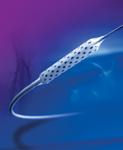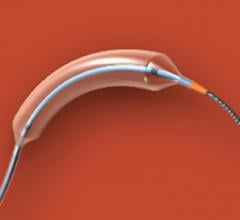
June 21, 2010 – This week, 22 new balloon sizes have been added to the PolarCath Peripheral Dilatation System, including balloon lengths of 120 and 150 mm. The Boston Scientific Corp. PolarCath System is used to restore blood flow in patients with critical limb ischemia (severe blockages in the arteries below the knee) and blockages in the femoral and popliteal (behind the knee) arteries. Both conditions result from peripheral artery disease.
Peripheral artery disease is a circulatory disorder that affects approximately 27 million people in North America and Europe. It results from a buildup of plaque in one or more arteries of the legs. As the disease progresses, accumulation of plaque may significantly reduce blood flow through the arteries, resulting in pain and increasing disability. In severe cases, amputation may be the only treatment option. Angioplasty, bypass graft surgery and thrombolytic (anticlotting) therapy have traditionally been used to prevent further disability and/or amputation.
The new PolarCath 120 and 150 mm balloons are available in both 0.014-inch and 0.035-inch guidewire-compatible platforms. The PolarCath System also offers balloon lengths of 20, 40, 60, 80 and 100 mm.
“The expanded portfolio of PolarCath balloons will enable interventionalists to address longer lesions in the femoral and subfemoral arteries, often more efficiently than using several shorter balloons,” said Tony S. Das, M.D., director of peripheral vascular interventions at the Presbyterian Heart Institute in Dallas. “The PolarCath System also offers the potential benefits of CryoPlasty Therapy for these complex lesions.”
CryoPlasty Therapy is a novel form of balloon angioplasty — delivered by the PolarCath System — that cools the inside of occluded arteries in the legs while opening the blockages. This technology uses nitrous oxide to fill an angioplasty balloon within a blocked artery, cooling the balloon’s surface to -10 degrees Celsius. As it is inflated, the cold surface of the balloon cools and dilates the vascular lesion. In the BTK CHILL study of patients with blockages in the arteries below the knee, CryoPlasty Therapy resulted in a high rate of limb salvage in patients with critical limb ischemia. Boston Scientific is the only company to offer cryoplasty therapy.
For more information: www.bostonscientific.com


 June 13, 2024
June 13, 2024 









